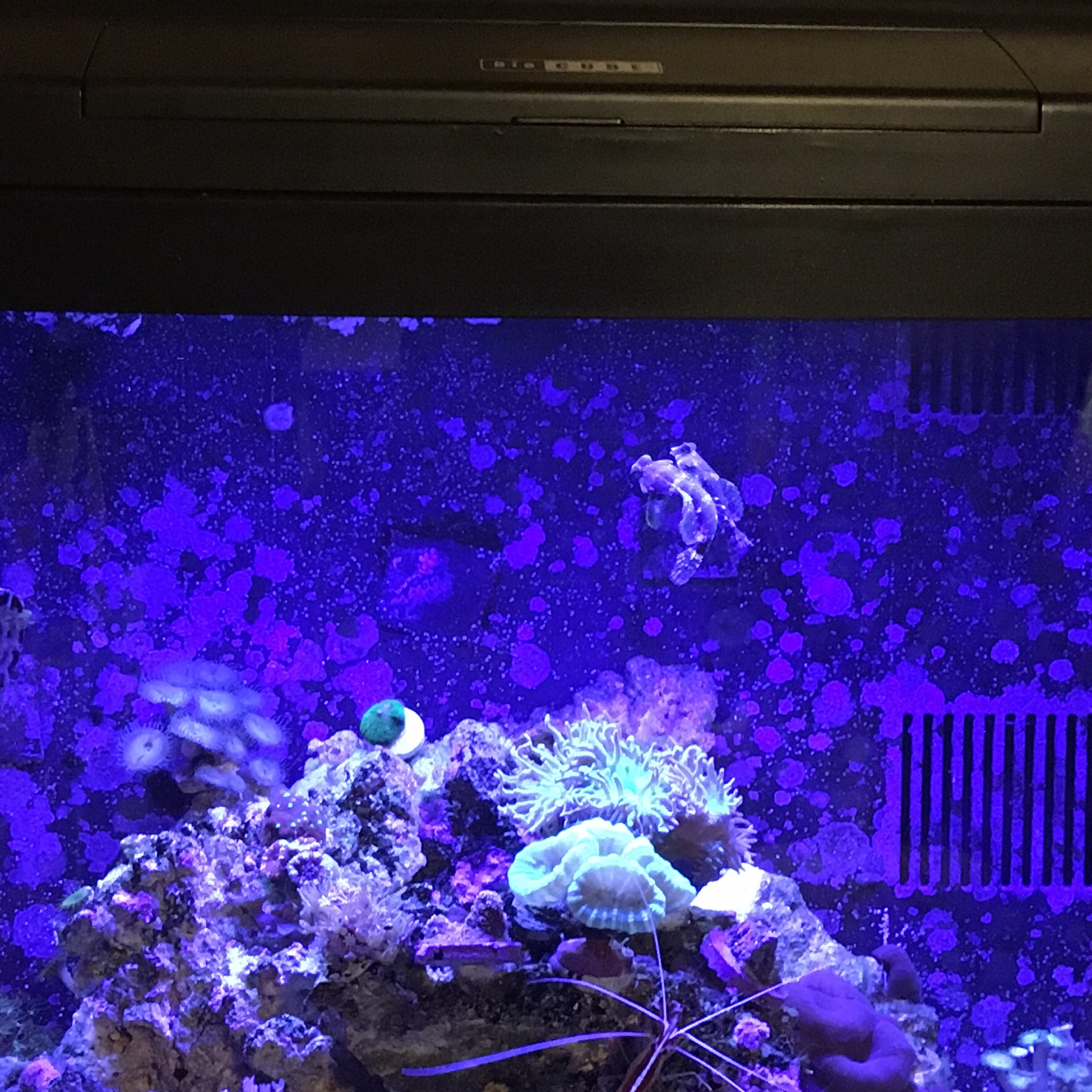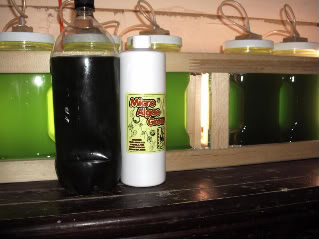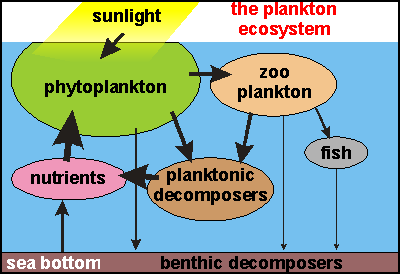Navigation
Install the app
How to install the app on iOS
Follow along with the video below to see how to install our site as a web app on your home screen.
Note: This feature may not be available in some browsers.
More options
You are using an out of date browser. It may not display this or other websites correctly.
You should upgrade or use an alternative browser.
You should upgrade or use an alternative browser.
Phytoplankton for control of Phophates and Nitrate in the Reef
- Thread starter Dr Blue Thumb
- Start date
- Tagged users None
- Joined
- Aug 23, 2015
- Messages
- 154
- Reaction score
- 48
Nice what size tank?
- Joined
- Aug 23, 2015
- Messages
- 154
- Reaction score
- 48
are they mainly for fresh water? can they be cultured for salt water and adapt to salt water conditions? sorry I heard of them but never learned about them.blackworms
- Joined
- Aug 23, 2015
- Messages
- 154
- Reaction score
- 48
F2 is pure of course it is loaded with p/n true tried and tested
- Joined
- Dec 20, 2016
- Messages
- 31
- Reaction score
- 66
Good discussion, but I really can deal
With it. No skimmer + Weekly water chances? Ok! But put algae (phyto) as organic food into reef thinking tho will export nutrients as N and P? No, I really didn't get it. Keep the discussion I want to get more info about it!
With it. No skimmer + Weekly water chances? Ok! But put algae (phyto) as organic food into reef thinking tho will export nutrients as N and P? No, I really didn't get it. Keep the discussion I want to get more info about it!
- Joined
- Aug 23, 2015
- Messages
- 154
- Reaction score
- 48
Take skimmers for example, they take out organics (fish poop) before they turn into inorganics (phosphate/nitrate), coral and sponges do the same. So if you can increase these organisms (coral/sponges) then ultimately there will be a reduction in organics before it turns into inorganics. Pytoplankton feed these organisms (coral and sponges) which in turn increases these organisms that consume organics before it turns into inorganics. corals and sponges eat dissolved organic matter such as liquid fish poop before it breaks down into phophate and nitrate.
Last edited:
- Joined
- Aug 23, 2015
- Messages
- 154
- Reaction score
- 48
Phytoplankton imo will contain a slight amount if any P/N depending on how it is cultured and when it is finished being cultured will tell you how pure it is. If it is dosed in large amounts, the phyto act like macro algae, consuming P/N like macro consumes inorganics. It does this by slightly growing for a few hours or so within the aqaurium when dosed and waiting to be consumed. When dosed in large amounts your water will turn green for a few hours then remain crystal clear afterwards once the phyto is consumed by the massive amounts of sponges and coral and critters in the reef.
If anyone trys this, make sure you have activated carbon running only because that is what I used. I use carbon mainly because I use tap water which has chlorine in it.
i'm going to assume that ammonia is yellow and that ammonia is consumed by the algae which this should contribute to a clear tank after the phyto clears up or sticks to surfaces?
If anyone trys this, make sure you have activated carbon running only because that is what I used. I use carbon mainly because I use tap water which has chlorine in it.
i'm going to assume that ammonia is yellow and that ammonia is consumed by the algae which this should contribute to a clear tank after the phyto clears up or sticks to surfaces?
Last edited:
- Joined
- Aug 23, 2015
- Messages
- 154
- Reaction score
- 48
Considering this works and that a person can use 150ppm water, no skimmer, no macro algae, no ATS, no phophate remover,and you will have an increase in coral/sponges/copepods etc what would you pay for a 2L bottle of this considering you have to dose 1 to 5 cups per 100G?
Maybe no carbon too.
Maybe no carbon too.
Phytoplankton imo will contain a slight amount if any P/N depending on how it is cultured and when it is finished being cultured will tell you how pure it is. If it is dosed in large amounts, the phyto act like macro algae, consuming P/N like macro consumes inorganics. It does this by slightly growing for a few hours or so within the aqaurium when dosed and waiting to be consumed. When dosed in large amounts your water will turn green for a few hours then remain crystal clear afterwards once the phyto is consumed by the massive amounts of sponges and coral and critters in the reef.
If anyone trys this, make sure you have activated carbon running only because that is what I used. I use carbon mainly because I use tap water which has chlorine in it.
i'm going to assume that ammonia is yellow and that ammonia is consumed by the algae which this should contribute to a clear tank after the phyto clears up or sticks to surfaces?
The species of phytoplankton common to the hobby and aquaculture contain N and P. There is no popular opinion on this; it's just the way it is. Also, algae has DNA which is composed of Nitrogen and Phosphorous, among other things. There are a few ways to culture algae, but, in the end, they need N and P, which aren't the only things algae require. Without N and P in the culture media, failure is the result. You can try this for yourself.
What do you mean about ammonia being yellow?
Chad
Considering this works and that a person can use 150ppm water, no skimmer, no macro algae, no ATS, no phophate remover,and you will have an increase in coral/sponges/copepods etc what would you pay for a 2L bottle of this considering you have to dose 1 to 5 cups per 100G?
Maybe no carbon too.
I would suggest proving that this can be done before you start selling algae based on the above concept. Live algae has been available for a long time in the hobby from numerous sources, but no one has used it the way you are suggesting. It should be fun for you to try to prove your approach and I would love to see how it all unfolds.
Chad
- Joined
- Aug 23, 2015
- Messages
- 154
- Reaction score
- 48
Sorry I thought ammonia was discolored from fish pee. lol? They use algae for clearing up sewage I think in real life? pretty powerful stuff.
- Joined
- Aug 23, 2015
- Messages
- 154
- Reaction score
- 48
I use florida aquafarm fertilizer, it's a pure form of inorganics, it is formulated and I use great husbandry so that all of it is used up with in the culture medium at time of harvest. I use a flash light and a density meter to ensure consistency. So if harvested the day before no culture. fertilizer is present then the P/N is low. My assumoption is that the phyto is growing within the reef aquaria thus consuming the left of ferrtilzer P/N and then consuming more P/N with in the aquariums reef before completely consumed.
- Joined
- Aug 23, 2015
- Messages
- 154
- Reaction score
- 48
- Joined
- Aug 23, 2015
- Messages
- 154
- Reaction score
- 48
4 cups to what size tank? how long has it been running?
Randy Holmes-Farley
Reef Chemist
View Badges
Staff member
Super Moderator
Excellence Award
Expert Contributor
Article Contributor
R2R Research
My Tank Thread
- Joined
- Sep 5, 2014
- Messages
- 67,160
- Reaction score
- 63,512
Take skimmers for example, they take out organics (fish poop) before they turn into inorganics (phosphate/nitrate), coral and sponges do the same.
Not quite the same. A skimmer removes it 100%. Any organism that consumes organics releases a portion (often the major portion) of the N and P in the food it eats.
Randy Holmes-Farley
Reef Chemist
View Badges
Staff member
Super Moderator
Excellence Award
Expert Contributor
Article Contributor
R2R Research
My Tank Thread
- Joined
- Sep 5, 2014
- Messages
- 67,160
- Reaction score
- 63,512
Phytoplankton imo will contain a slight amount if any P/N depending on how it is cultured and when it is finished being cultured will tell you how pure it is.
That ignores the huge amount in tissues themselves. The free N and P are generally insignificant in any type of food relative to the amount that is part of the tissue itself.
Ammonia is definitely not yellow. lol
Similar threads
- Replies
- 3
- Views
- 144
- Replies
- 6
- Views
- 227
- Replies
- 11
- Views
- 312
- Replies
- 6
- Views
- 348
- Replies
- 3
- Views
- 220






















